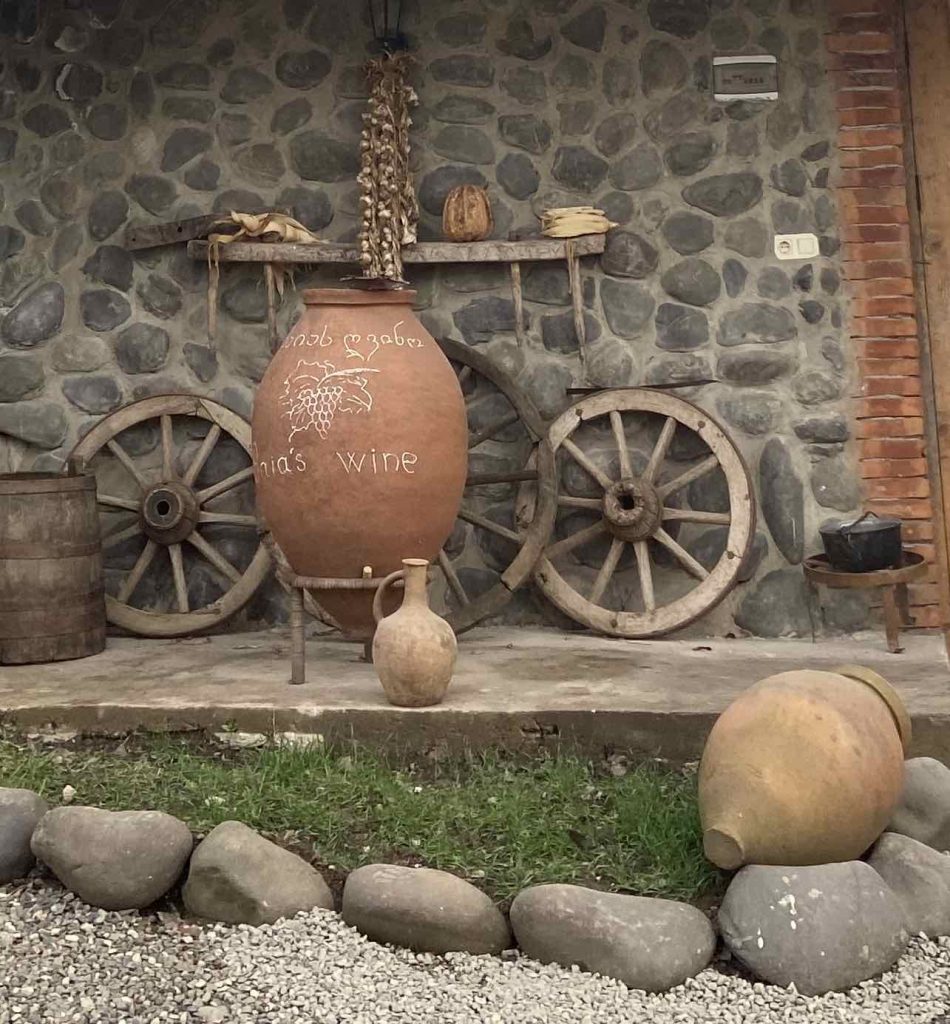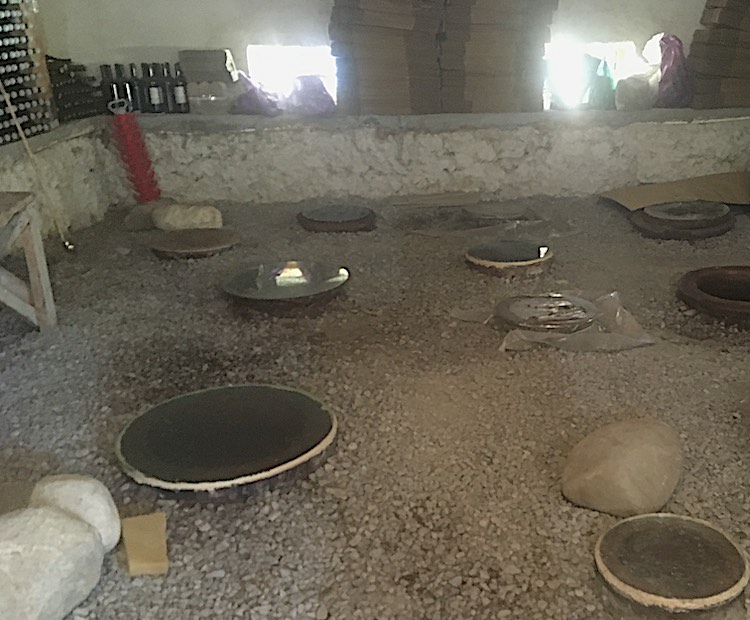
What is Qvevri and what does it do to wine?
Wines made from qvevri are becoming more mainstream and in demand all over the world. They offer a very unique tradition that dates back centuries from the country of Georgia. But what exactly is qvevri and why does it produce wine in the way that it does?
What is qvevri?
Qvevri, in essence, is an egg-shaped clay pot that has been used in traditional winemaking families for what is assumed to be around 8000 years. Its shape is very similar to an ancient Greek amphora, only without the handles. It has, and still is, used in Georgia and is thought to be one of the first vessels to be used to ferment, age and store wine. It is a winemaking method that is so profound that in 2013 it was awarded a non-material cultural heritage status by UNESCO.
In recent years, a qvevri pot was discovered in the region of Marneuli which after scientific testing found that it dated back to somewhere between 400-500 B.C.
Whilst qvevri wines have come a long way, the method of using these pots has not. Making wine with these egg-shaped vessels is no easy task as they are buried in the ground to the neck of the qvevri and then sealed. Clearly, this is obviously a very labour intensive process to maintain due to the weight and varying size of the pots. This burial method is the same all over the country of Georgia, however, in western Georgia they keep the qvevri outside in the vineyard and in eastern Georgia they keep them buried inside the winery’s cellar.

Across Georgia, there are a few businesses that make new qvevri for commercial vineyards. However, they are most prominently and commonly used in the rural villages and towns by families where the vessels themselves are homemade.
Traditions in Georgia are a very important part of life in the country, with winemaking being one of the most important. From an early age, children are taught how to maintain and harvest the vines, press the grapes and collect the local clay so that it can be moulded and fired to make the new qvevri by the family elders. As the children grow up they take on more responsibility in continuing these practices and tradition, passing on the knowledge to the next generation.
This tradition has become so ingrained in Georgian life, that every year at the beginning of May the villages tend to get everyone together, make and share food whilst celebrating the annual opening of the qvevri and freely sharing the contents inside.
What qvevri does to wine?
In the traditional wine-producing regions of France, the wine is fermented in oak barrels made from various types of new or old wood. The wood variations and age can dictate the flavour, colour and other characteristics that are then added to the wine as a result. On the opposite side, there are stainless-steel vats which do not impart any flavour to the wines. Qvevri is somewhat closer to latter, but because of its slightly porous structure and mineral compounds in clay, they influence the wines.
Once the grapes are harvested and lightly pressed, the juice along with the seeds, skins and stems are poured into the qvevri. It is then sealed. Across Georgia this wine is left for various lengths of time, however it can be anywhere from 4-6 weeks for red wines and 4-6 months for white wines.
Whilst the juice is fermenting and becoming wine, the contents of the sealed qvevri begin to settle. It means that the only lightly pressed grapes are naturally pressed inside the qvevri, creating a natural free-run juice, with the heavier parts of the qvevri contents, the skins, seeds and stems, settling at the bottom. This makes the wine easier to decant from the qvevri when it is open and leaves the contents for another special traditional Georgian beverage.
As the qvevri is made from fired clay, it offers the wine some more fruity and savoury tones on the nose and the palate and imparts a darker shade on white wines making them appear to have an orange or, better say, amber colour.
White and Red Qvevri Wines
With white wines, in particular, the body of the wine becomes fuller, tannins become noticeable and some delicate flavours become more intense with orange peel, marmalade and quince to be most typical. With time, qvevri white wines lose their acidity slightly and get more and more amber and fuller-bodied.
Red wines also get their tannins accentuated, the body becomes fuller and flavours tend to get more sweet spice, vanilla and creaminess. Young qvevri red wines are quite punchy, with young and chalky tannins. With time, red qvevri wines become more structured, acidity settles and gives way to more secondary and tertiary aromas and flavours. They really depend on a particular grape variety used.
Qvevri was and still, in many ways, is a trial and error process
Ancient Georgians discovered that by burying the qvevri and offering a lower temperature, the pressure does not build inside the qvevri and the wine will become more stable and present itself with a more average level of alcohol.
Sadly there is very little documented information across the millennia’s of Georgia’s use of qvevri. Much of the knowledge has been passed down through the generations which can provide a potential problem for newcomers to the Georgian wine industry. Despite the lack of concrete information, winemakers across the country are united in fully embracing their wine heritage and exploring where they can go to make wine in qvevri. At times they are ripping up the little known rules and experimenting with all aspects of qvevri’s uses and capabilities with ingenuity and technology. That can only mean one thing, a few years of delicious wine with new or enhanced practices to pass onwards to the future generations of winemakers.
Chacha, cha!
Talking about Georgian wines and all their traditions, it would not be fair to talk about chacha. Chacha is made by heating up the byproducts left over from winemaking and distilled through a mini distiller and left to drip for several hours. As it is made from the fermented and partially fermented byproducts of wine, the potency of chacha can be anywhere between 40-60% alcohol.
Chacha is often referred to as brandy, however this is not entirely fair as brandy is technically made from a finished base. The best way to describe chacha is to offer a comparison to grappa.
Should you ever visit a traditional vineyard to sample the wines, there is always a very common theme, a wonderfully warm welcome, a feast of traditional Georgian dishes and lots of natural wine which is then followed by slowly sipping chacha and toasting to everyone’s good health!
Good Georgian wines from qvevri
There are many amazing winemakers who have fully embraced the history and ancient traditional practices of Georgian winemaking in every region of the country. Our natural wine list is composed of 12 exciting winemakers. We feel they deserve very special attention.
Visit us at Living Vino to try delicious qvevri wine made by passionate Georgian artisans – these winemakers are truly embracing quality and ensure careful processes at their vineyards and wineries. This way, true natural wines are made – read more about our definition of natural wines here and come and visit Living Vino wine bar in central Tbilisi to try!




